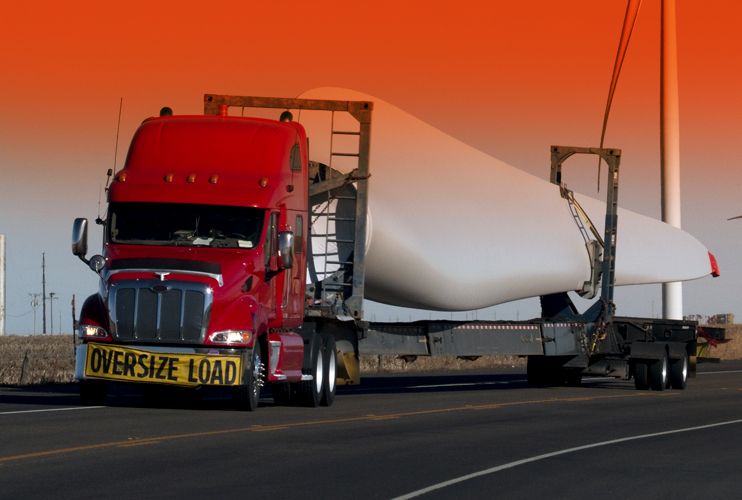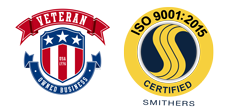Wind turbines are getting bigger. Blades that once stretched 40 meters now exceed 120. Towers top 100 meters. Nacelles can weigh over 100 tons. Moving these behemoths across thousands of miles is an engineering challenge, yes, and it’s also a financial and environmental one. In fact, logistics is one of the single largest soft costs in wind energy.
Today, as wind developers scale up to meet clean energy targets, the trucking strategies of the past no longer cut it.
Rising fuel costs, supply chain constraints, and Scope 3 emissions disclosures are pushing the industry to rethink how we move massive components.
The solution isn’t just bigger trailers or longer permits. It’s smarter logistics—data-driven, emissions-conscious, and built for scale.
The Real Cost of Transport in Wind Energy
Trucking costs for a wind project can eat up 10% or more of the total project budget. For utility-scale builds, that means millions of dollars.
Consider the basics: a single wind turbine can require over a dozen oversized hauls. Every blade, tower section, and nacelle component travels separately, often across state lines.
And the costs aren’t just financial. Long-haul routes mean heavy diesel use, emissions, and logistical complexity. Components that exceed 200 feet in length require specialized trailers, police escorts, and pre-planned routes accounting for bridge weight limits and road curvature. A single miscalculation can delay delivery by days—and delay energization by weeks.
With turbines growing in size and more wind farms pushing into remote or mountainous terrain, these challenges only intensify.
Optimization Strategies to Reduce Cost and Emissions
Route Optimization Software
The first and most impactful fix? Smarter routing.
AI-powered logistics platforms can now evaluate road conditions, bridge clearances, traffic data, and local permit rules to generate optimized haul plans. These tools reduce mileage, idling, and detours—saving fuel and driver hours while minimizing permitting risk.
Some platforms also model emissions impacts in real time, helping developers better understand the carbon cost of each trip. When multiplied across dozens of components and hundreds of miles, that intelligence becomes a serious strategic asset.
Modular Transport Systems
The gear is evolving too. Wind-specific blade trailers with hydraulic lifts and extendable frames can now navigate tighter turns and varying road conditions. Self-propelled modular transporters (SPMTs) allow turbine components to be loaded and moved on-site with precision, eliminating the need for full-length escort routes.
These innovations not only make oversized transport safer and more flexible, they also reduce the need for costly roadwork, tree trimming, or temporary structure removals along the way.
Fuel-Efficient Fleets & EV Integration
Some logistics firms are making long-term bets on decarbonized fleets. Hybrid and renewable diesel (HVO)-powered trucks are already in use among leading haulers, and electric support vehicles are being tested for convoy operations and last-mile hauls.
It’s not yet common to see an all-electric heavy-haul rig delivering a 120-meter blade, but the industry is clearly trending in that direction. Firms that start integrating lower-emission equipment now are more likely to meet future Scope 3 reporting thresholds—and win bids from ESG-conscious developers.
Regulatory Pressure and ESG Expectations
As emissions accounting moves downstream, transport emissions are now under the microscope. Major developers and investors are asking tough questions about how turbines get to site—not just how clean the electrons are once they’re spinning.
Power Purchase Agreements (PPAs) increasingly include sustainability performance clauses, requiring developers to report embodied carbon, including logistics emissions. Some lenders and tax equity partners are following suit, applying ESG filters to project financing.
That means logistics is a compliance and capital access issue. Companies that can prove lower emissions per megawatt moved will stand out.
What Developers and EPCs Should Be Doing Now
For developers, it starts with asking better questions. Not just “What’s the trucking cost?” but “What’s the emissions footprint?”
Procurement teams should factor route efficiency, fleet profile, and ESG readiness into vendor selection.
EPCs should push for pre-bid logistics modeling using real-world data. That includes using route simulation software and emissions calculators to identify the lowest-carbon delivery options before contracts are signed.
And all stakeholders should evaluate logistics partners based on technology adoption: Do they use AI-based routing? Are they investing in hybrid or EV fleets? Do they have internal sustainability tracking systems?
An audit of your current logistics vendors’ capabilities can identify gaps and help shift future RFPs toward smarter, greener hauls.
Conclusion: Moving Wind Smarter, Not Just Bigger
Wind component logistics has traditionally been treated as a brute-force engineering task. But in 2025, it’s a business strategy. The developers and EPCs who treat transport as a lever for cost savings and ESG differentiation will have a distinct competitive edge.
Smarter trucking is about more than moving blades from A to B. It’s about reducing risk, emissions, and friction across the entire value chain. The best time to modernize your logistics strategy was yesterday. The second-best time? Before your next turbine goes on the road.
Wind energy is scaling. Let’s make sure the way we move it scales smartly.


